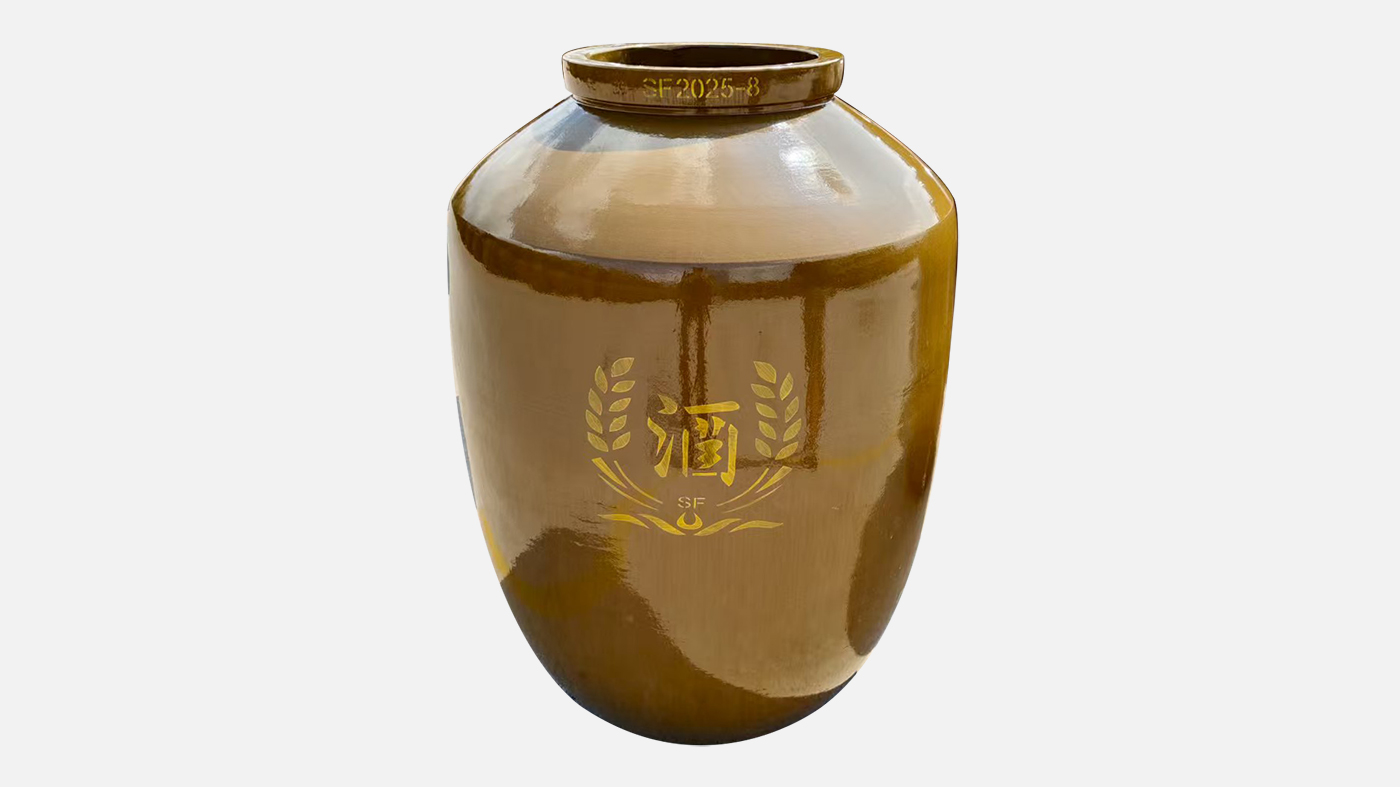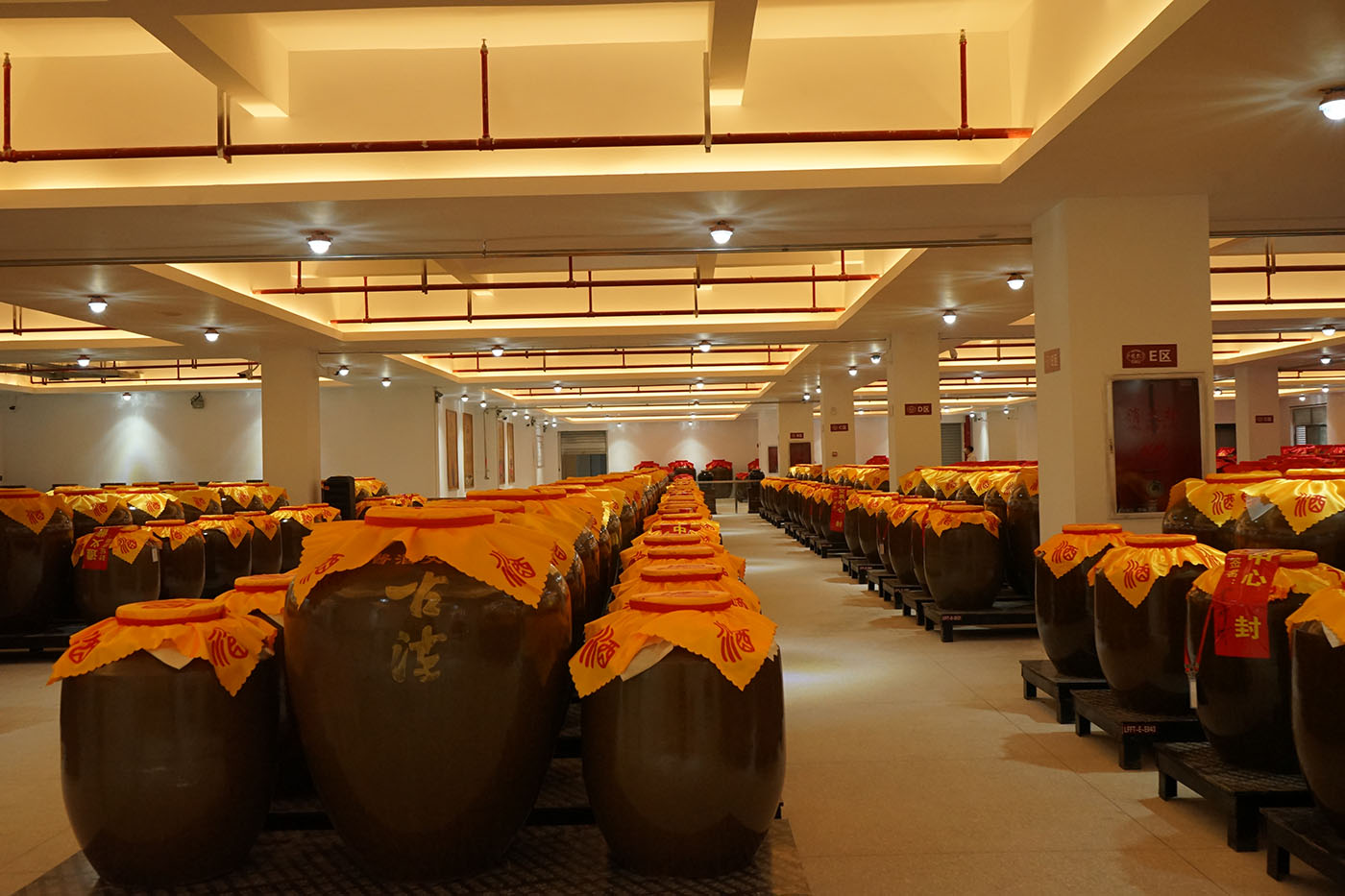Ceramic wine jars, also known as wine jars or wine barrels, are one of the oldest wine storage containers. Shunfa offers this 200 liter glazed clay wine jar, which can be used for wine making and storage. It is made of natural high-quality clay and fired at 1370 ℃ to form. Its core value lies in the brewing, fermentation, and aging of alcoholic beverages. The wall of glazed clay wine jars has micropores, which is the key to distinguishing them from stainless steel barrels, glass bottles, and glazed pottery during aging.

The Benefits Of 200L Glazed Clay Wine Jars For Aging
The unique physical and chemical properties of glazed clay jars bring distinctive effects to wine aging
● Micro oxidation:
The micropores on the clay walls allow trace amounts of oxygen to slowly and continuously penetrate into the wine, softening the tannins and making the taste smooth and mellow. Its oxidation effect is more significant than stainless steel barrels, and slower, warmer, and more uniform than older wooden barrels.
● Temperature regulation:
Clay material has good thermal inertness, which can help buffer the drastic fluctuations of external temperature, making the temperature changes of the wine inside the container smoother and more stable
● Humidity regulation:
The micropores of clay also allow trace amounts of water to evaporate, which helps maintain a relatively stable humidity environment inside the container. This is beneficial for alcoholic beverages that require a certain level of humidity and can prevent excessive drying.
● Mineral exchange and unique flavor contribution:
The inner wall of glazed clay will undergo weak ion exchange with the liquor, and the minerals such as iron, calcium, and potassium contained in it will dissolve in trace amounts, adding flavor layers. This is an important characteristic that distinguishes it from neutral containers such as stainless steel and glass.
● Neutral container impact:
Unlike oak barrels, the new clay pot does not give the wine a distinct woody, vanilla, or other flavor. It can purely showcase the characteristics of the raw materials, terroir, and craftsmanship, making it an ideal container for “pure expression”. Moreover, it maintains a slight oxidation and mineral exchange effect even after long-term use.
Core Difference Between Glazed Clay Wine Jars And Unglazed Clay Wine Jars
| Comparing Dimensions | Unglazed Pottery Jar | Glazed Pottery Jar | Explanation Of Scientific Principles |
| Breathability | ▲ High (Microporous Open) | ▼ Extremely Low (Glaze Layer Sealed) | After High-Temperature Melting Of Glaze, It Blocks The Pores Of Clay |
| Oxidation Rate | 0.8-1.2ml O ₂/L · Month (Promotes Aging) | 0.05-0.1ml O ₂/L · Month (Approximately Stainless Steel) | The Microporous Structure Allows For Slow Permeation Of Oxygen |
| Mineral Dissolution | ▲ Significant (Calcium/Iron/Manganese Ions Increase Mineral Sensitivity) | ▼ Trace (Glaze Layer Barrier) | Minerals In Clay Come Into Direct Contact With Liquor |
| Acid Alkali Effect | Ph Value Increases By 0.3-0.5 (Weakly Alkaline Buffer) | Ph Change<0.1 (Neutral) | Clay Containing Carbonates Can Neutralize Some Acidity |
| Humidification | Bidirectional Regulation (Moisture Absorption/Release) | External Moisture Absorption Only | Capillary Action Endows Unglazed Pottery With The Ability To ‘Breathe’ |
| Cleaning Convenience | ▼ Difficulty (Pore Contamination, Chemical Agents Are Prohibited) | ▲ Easy (Smooth Glaze Surface, Can Be Soft Brushed For Cleaning) | Glazed Surface Forms A Glassy Sealing Layer |
| Service Life | 5-8 Years (Gradual Blockage Of Micropores) | 10-15 Years (Glaze Layer Protects The Body) | Tartaric Acid Crystallization Leads To A Decline In Permeability Of Unglazed Jars |
| Typical Alcohol Content Adaptation | 16% Abv (Inhibition Of Miscellaneous Bacteria) | Unrestricted (Including Low Alcohol Beverages) | Low Alcohol Content Is Prone To Contamination By Acetic Acid Bacteria In Unglazed Jars |
The Suitable Scenarios For 200L Glazed Clay Wine Jars
Clay jars are often used in modern winemaking to create wines with specific styles and concepts. As a reliable ceramic jar manufacturer and supplier in China, Shunfa has OEM/ODM capabilities and can provide customized solutions for customers with different scene needs.

● Wine making industry:
Georgian Qvevri pottery jar aging is a national level intangible cultural heritage, adopted by over 90% of traditional wineries; Many places in Spain and Portugal also continue the millennium old pottery jar aging process. Compared to oak barrels and stainless steel tanks, pottery aged wine has a premium of 20-50% and higher efficiency
● Spirits and Strengthening the Liquor Industry:
Sherry wine from Spain, aged in ceramic jars, accounts for about 15% of the high-end production capacity. Mexican tequila and clay pot distillation (such as Tequila Ocho’s “Penca” series) enhance the roundness of the taste, becoming the core selling points of niche boutique factories
● Traditional Asian Liquor Industry:
Chinese Huangjiu: Shaoxing intangible cultural heritage “Huadiao Wine” is aged in pottery jars, which promote esterification through breathability. The ancient Yue Longshan pottery jars have a reserve of over 2 million pieces.
Japanese Sake: The “Sh ō n” fermentation process uses ceramic jars to enhance microbial activity and taste.
Korean Maggi liquor: stored in pottery jars to delay spoilage, it is the core container of traditional markets.
● Craft Beer Revolution:
Sour beer/natural fermentation: Jester King from the United States and Cantillon from Belgium capture wild yeast (Brettanomyces) in pottery jars, increasing complexity by over 30%. Ceramic jar micro oxidation replaces oak barrels to reduce costs (such as Dry&Bitter distillery in Denmark). Global craft beer pottery usage increases by 12% annually (Craft Brewers Conference 202●
● Fruit wine/experimental fermented drink:
Cider: Somerset aged apple cider from the UK, such as Hecks, reshapes traditional flavors.
How To Precisely Control The Micro Permeability Of Terracotta Pots? How To Ensure That There Will Be No Excessive Oxidation Or Leakage?
The production of Shunfa pottery jars uses a specific clay formula and high-temperature sintering technology above 1280 ℃ to form a stable microporous structure. Each pottery jar has undergone leakage testing and a testing report can be provided.
What Is The Minimum Order Quantity (Moq)? Can We Accept Small-Scale Trial Orders?
We support a tiered MOQ: the standard MOQ is 100 pieces, and the trial order can be reduced to 50 pieces (with shared mold costs);
Shared Container: Propose LCL to reduce the cost of small batch shipping;
Sample policy: Provide paid samples (which can be deducted from subsequent orders), accompanied by a complete quality inspection report.
Can We Customize The Logo, Size, Or Special Glaze Color?
Our customization process: submit design draft online → 2 3D rendering confirmation → 3 Sample making (2-3 weeks) → 4 output.
Customization options: LOGO, color, size, glaze color, etc. are available for selection.
How Should I Handle It Before First Use? How To Clean And Maintain It In Daily Life?
Pre treatment: Soak in salt water for 48 hours → rinse with clean water → dry naturally in the shade.
Cleaning: Use only a soft brush and warm water, do not use detergents.
